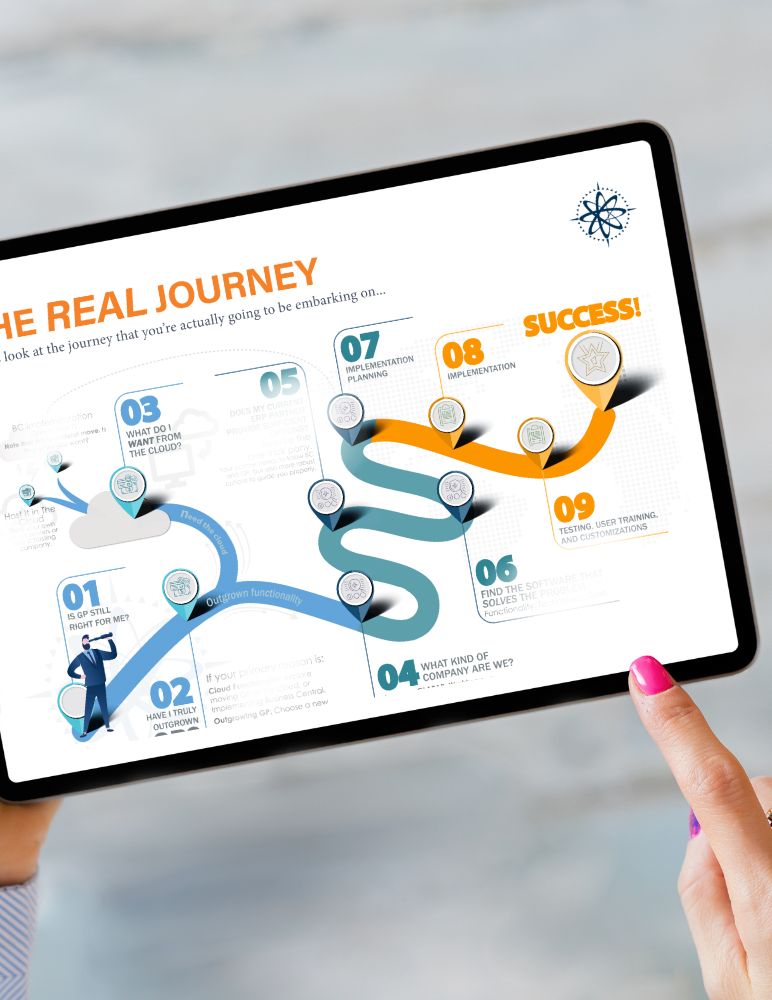ERP Implementations Reimagined - Part 2 - The Shadow ERP Problem
The Shadow ERP Problem

In the Acceleration Economy, the expectation is that technology speeds up business processes, making them more accurate and cost-effective.
Historically, major technology applied to ERP platforms has had the exact opposite effect. The primary technologies that have negatively impacted ERP include:
- Windows
- The mouse
- The browser
For many years, the trend in ERP software has been that the application of new technology has made it more difficult and expensive to install, maintain, and upgrade. All too often, new UI components to make technology accessible to a broader (read: generic) audience has served as a band-aid to cover deeper functional limitations.
But the problem goes beyond technology and beyond new user interfaces, whether they’re browsers, mice, chatbots, or AI assistants.
The real underlying problem is a failure for planning and implementation methodologies to keep pace with broader changes in user and business behavior. As a result, failed or challenged ERP selection, upgrade, and implementation projects have become the rule, rather than the exception.
One of the biggest symptoms of a failed ERP adoption is what we call the “Shadow ERP” phenomenon. Shadow ERP represents the unseen work-arounds and disparate software components that do much of the work promised (but never delivered adequately) by the ERP.
Solving for that problem requires a fundamental rethinking of how ERP systems are implemented, adopted, and supported throughout their lifecycle.
Rethinking the ERP
A significant issue is that Dynamics partners follow the same derivative implementation strategy—often called the Sure-Step Methodology. The Sure Step Methodology and its offspring offer partners a hammer for ERP selection, implementation, and upgrade projects when a scalpel is required.
- Sure Step project templates, workflows and process maps are great for documenting an implementation; but not for anticipating and overcoming obstacles
- Sure Step methodologies don’t focus on the three key KPIs for any implementation: time, budget, and delivery on requirements
- Sure Step can’t compensate for a lack of partner implementation experience or expertise
In addition to Sure Step methodology problems, Pelorus regards the failure to identify, catalog, and understand Shadow ERP components as a root cause of failed and challenged projects. Even on successful projects, it can be reasonably argued that a lack of understanding of Shadow ERP components will add considerable time and cost to a project.
What is Shadow ERP?
There is an old joke bandied about by ERP consultants working on manufacturing ERP implementations that goes like this:
Q: What does ERP stand for?
A: Excel Runs Production! Bada boom.
This is what passes for high humor in the ERP implementation world.
However, the point is clear; sophisticated ERP software is rarely implemented without critical functionality crippled by some combination of the following:
- Functional requirements misaligned with the selected software
- Improper setup of the software
- Poor, incomplete, or no training
- Budgetary issues
- Lack of buy-in to the new solution
- Sub-par implementation support
What happens when your expensive ERP platform does not fully allow users to execute their required business processes? The answer is that Shadow ERP happens.
When users cannot "run the business" on the ERP platform, they have to resort to manual workarounds, customizations, and additional software tools or manual processes.
ERP shortcomings are often addressed with Excel spreadsheets: Shadow ERP
Our experience is that management rarely understands the breadth and scope of Shadow ERP in their company and is shocked when made aware of its use and prevalence.
Imagine being sold a chainsaw as a dramatic improvement to traditional hand saws for cutting wood. However, you don't receive proper training:
Customer: this chainsaw is no improvement to my regular saw. Actually, it's even harder to use!
Salesman: let me see what's wrong.
The salesman fires up the chainsaw.
Customer: HEY! What's that noise?
The shock is even more significant if they discover that their shiny new and expensive ERP system requires a similar number of Shadow ERP enhancements.
Shed Light on Your Shadow ERP
At Pelorus, understanding the Shadow ERP concept is critical to our re-imagined methodology for preventing ERP software selection, implementation, and upgrade project failures. Understanding, cataloging, and managing Shadow ERP elements dramatically improves the time to value of our ERP selection, implementation, and upgrade projects, a must in the new accelerated economy.
In our next blog, "The Shadow ERP Ratio" we will discuss how we identify Shadow ERP elements and how we analyze those findings to improve ERP selection, implementation, and upgrade projects.
Pelorus Technology is a global Microsoft Dynamics Enterprise Resource Planning (ERP) implementation partner. The Pelorus Partners believe that the Microsoft Technology stack and Dynamics products afford customers the most reasonably priced and functionally complete ERP platform in the market. Our team is dedicated to identifying and implementing new and improved methodologies, attitudes, and tools to set a new standard in speed to value for our ERP selection, implementation, and upgrade projects. Contact us today to see how our Pelorus advanced thinking can benefit your ERP project.

Pelorus Technology is a Global Microsoft Implementation Partner delivering on the vision of the Microsoft Technology Stack. Global reach with a local touch.
All Rights Reserved | Pelorus Technology











